Macro- and microscopic anatomy of the digestive tract in the red-eared slider (Emydidae: Trachemys scripta elegans)
- PMID: 39774418
- PMCID: PMC11684675
- DOI: 10.1371/journal.pone.0315737
Macro- and microscopic anatomy of the digestive tract in the red-eared slider (Emydidae: Trachemys scripta elegans)
Abstract
The red-eared sliders (Emydidae: Trachemys scripta) is characterised by a high adaptability to a variety of environment and threatens the habitat of Japanese native species. The ability to digest a variety of diets may attribute to the high adaptive capacity of this species to various environments, however, the digestive morphology remains scarcely described in red-eared sliders. In this study, we investigated the macro- and microscopic anatomy of the esophagus, stomach, small intestine, and large intestine in red-eared sliders. All segments of the digestive tract had longitudinal mucosal folds, the height and width of which varied in each segment of the digestive tract. The stomach had the highest and widest mucosal folds. The mucosal folds in the proximal-to-middle small intestine exhibited a zigzag shape, whereas those in the distal small intestine were linear. The wall of the digestive tract regularly consisted of mucosa, submucosa, tunica muscularis, and tunica adventitia or serosa. In each segment of the digestive tract, the epithelial structure was different. The esophagus and small intestine were lined by the pseudostratified columnar epithelium. In both segments, the basal part of the pseudostratified epithelium included proliferating cell nuclear antigen (PCNA)-positive proliferating cells. The stomach and large intestine were lined by the simple columnar epithelium. In the stomach and large intestine, PCNA-positive proliferating cells were present in the neck of the proper gastric gland and crypt-like structures, respectively. The proper gastric gland was composed of oxynticopeptic and mucous cells. This study revealed the detailed macro- and microscopic anatomy of the digestive tract in red-eared sliders. Overall, our findings may provide an anatomical basis for understanding the relationship between morphology and function in the digestive tract of turtles.
Copyright: © 2024 Miyai et al. This is an open access article distributed under the terms of the Creative Commons Attribution License, which permits unrestricted use, distribution, and reproduction in any medium, provided the original author and source are credited.
Conflict of interest statement
The authors declare that they have no known competing financial interest or personal relationships that could have appeared to influence the work reported in this paper.
Figures
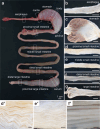

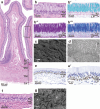

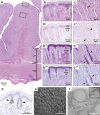

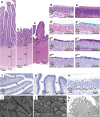
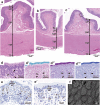

Similar articles
-
Comparison of Gastrografin to barium sulfate as a gastrointestinal contrast agent in red-eared slider turtles (Trachemys scripta elegans).Vet Radiol Ultrasound. 2010 Jan-Feb;51(1):42-7. doi: 10.1111/j.1740-8261.2009.01619.x. Vet Radiol Ultrasound. 2010. PMID: 20166392
-
Morphological Analysis of the Digestive Tract of Cockatiels (Nymphicus hollandicus)-Oesophagus to Colorectum.Anat Histol Embryol. 2025 Jan;54(1):e70007. doi: 10.1111/ahe.70007. Anat Histol Embryol. 2025. PMID: 39629861
-
Magnetic resonance imaging measurements of organs within the coelomic cavity of red-eared sliders (Trachemys scripta elegans), yellow-bellied sliders (Trachemys scripta scripta), Coastal plain cooters (Pseudemys concinna floridana), and hieroglyphic river cooters (Pseudemys concinna hieroglyphica).Am J Vet Res. 2017 Dec;78(12):1387-1399. doi: 10.2460/ajvr.78.12.1387. Am J Vet Res. 2017. PMID: 29182385
-
Boundaries, junctions and transitions in the gastrointestinal tract.Exp Cell Res. 2011 Nov 15;317(19):2711-8. doi: 10.1016/j.yexcr.2011.07.011. Epub 2011 Jul 23. Exp Cell Res. 2011. PMID: 21802415 Free PMC article. Review.
-
Regulation of Gastrointestinal Mucosal Growth.San Rafael (CA): Morgan & Claypool Life Sciences; 2010. San Rafael (CA): Morgan & Claypool Life Sciences; 2010. PMID: 21634069 Free Books & Documents. Review.
References
-
- Chatterji RM, Hipsley CA, Sherratt E, Hutchinson MN, Jones EH. Ontogenetic allometry underlies trophic diversity in sea turtles (Chelonioidea). Evol Ecol. 2022;36: 511–540. doi: 10.1007/s10682-022-10162-z - DOI
MeSH terms
LinkOut - more resources
Full Text Sources
Miscellaneous

